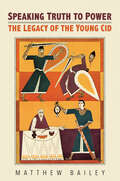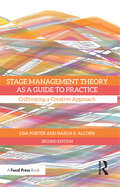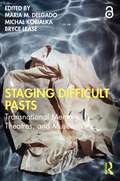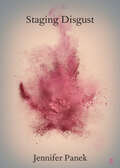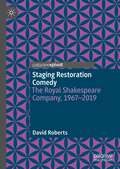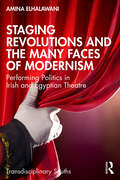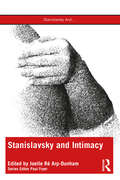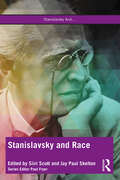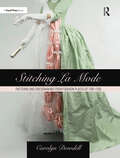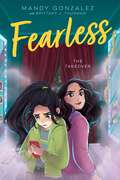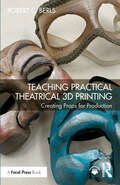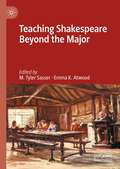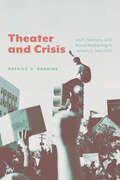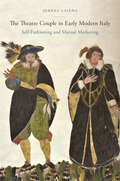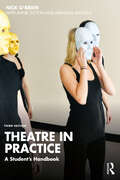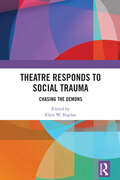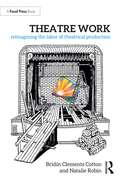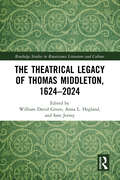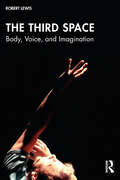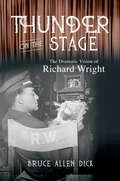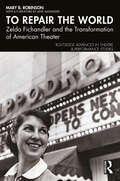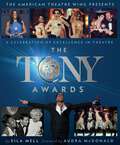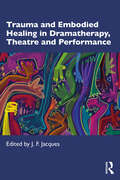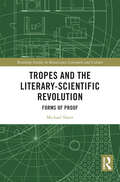- Table View
- List View
Sparkles, No Sparkles
by Shannon McNeillAdorable animals go for a glittering night at the theater in this hilarious picture book, a perfect read-aloud tale for very young readers.A frog has no sparkle.A poodle has no sparkle.A pigeon has no sparkle.Not to worry! A cape has sparkle, a crown has sparkle and boots have sparkle.Some wily animals decide to hit the stage, leaving the actors without costumes. After the animals get their moment in the spotlight, chaos ensues . . . but luckily there are some chicks with sparkle to save the day.
Speaking Truth to Power: The Legacy of the Young Cid (Toronto Iberic #86)
by Matthew BaileyEmerging from a richly diverse oral narrative tradition, the heroic tale of the young Cid appears in multiple textual manifestations. From its first appearance circa 1300, the dynamic narrative of the legendary deeds of this young Castilian warrior eclipses the uninspired, matter-of-fact narration of the reign of Fernando I into which it is incorporated. In its analysis of the Mocedades de Rodrigo, the epic poem of Cid’s youth, Speaking Truth to Power identifies the narrative cohesion and the aesthetic principles that elevated the story of the young Cid to its place of prominence among the epic narratives of medieval Spain. Examining the evolution of the narrative through various textual versions, Matthew Bailey highlights the permutations that propelled the young Cid’s unparalleled popularity. The book traces this vibrant narrative tradition from its earliest manifestation in the aftermath of Charlemagne’s imperial mission in Spain to the early modern drama of Guillén de Castro. It convincingly discerns the leadership qualities and the social impact of its legendary protagonists, from their manifestation in the Latin chronicles of early Iberia through the Renaissance, incorporating a wealth of previous scholarship in its innovative findings. Speaking Truth to Power provides readers with a heightened appreciation for the vibrancy of the poetic tradition that lives beyond the texts we study, the oral narratives that are continually refashioned for new audiences and contexts.
Stage Management Theory as a Guide to Practice: Cultivating a Creative Approach
by Lisa Porter Narda E. AlcornStage Management Theory as a Guide to Practice, Second Edition offers theory and methodology for developing a unique and inclusive stage management style, preparing stage managers to develop an adaptive approach for the vast and varied scope of the production process, forge their own path, and respond to the present moment with care and creativity. This book provides tactile strategies, enabling stage managers to navigate different groups of collaborators, venues, and projects. Experiential stories based on extensive experience with world-renowned artists exemplify the practices and provide frameworks for self-reflection, synthesis, and engagement with theory-guided practice. This book empowers stage managers to guide any collaborative project to fruition by incorporating the "How You" with the "How To." This second edition has been expanded, and includes new experiential stories and a new chapter focused on inclusive processes that can be applied from pre-production through closing, as well as the full text of the HowlRound Theatre essay We Commit to Anti-Racist Stage Management Education. Exploring topics such as group dynamics, ethics, culture, and strategic communication, Stage Management Theory as a Guide to Practice is an essential tool for advanced stage management students, educators, and professionals.
Staging Difficult Pasts: Transnational Memory, Theatres, and Museums
by Maria M. Delgado Michal Kobialka Bryce LeaseThis collection of original essays brings together museum, theatre, and performance case studies with a focus on their distinctive and overlapping modes of producing memory for transnational audiences. Whether this is through narrative, object, embodied encounter or a combination of the three, this volume considers distinctions and interactions between memory and history specifically through the lenses of theatre and performance studies, visual culture, and museum and curator studies. This book is underpinned by three areas of research enquiry: How are contemporary theatre makers and museum curators staging historical narratives of difficult pasts? How might comparisons between theatre and museum practices offer new insights into the role objects play in generating and representing difficult pasts? What points of overlap, comparison, and contrast among these constructions of history and memory of authoritarianism, slavery, colonialism, genocide, armed conflict, fascism, and communism might offer an expanded understanding of difficult pasts in these transnational cultural contexts? This collection is designed for any scholar of its central disciplines, as well as for those interested in cultural geography, memory studies, and postcolonial theory. The Open Access version of this book, available at http://www.taylorfrancis.com, has been made available under a Creative Commons Attribution-NoDerivatives (CC-BY-ND) 4.0 license.
Staging Disgust: Rape, Shame, and Performance in Shakespeare and Middleton (Elements in Shakespeare Performance)
by null Jennifer PanekThis Element turns to the stage to ask a simple question about gender and affect: what causes the shame of the early modern rape victim? Beneath honour codes and problematic assumptions about consent, the answer lies in affect, disgust. It explores both the textual "performance" of affect, how literary language works to evoke emotions and the ways disgust can work in theatrical performance. Here Shakespeare's poem The Rape of Lucrece is the classic paradigm of sexual pollution and shame, where disgust's irrational logic of contamination leaves the raped wife in a permanent state of uncleanness that spreads from body to soul. Staging Disgust offers alternatives to this depressing trajectory: Middleton's Women Beware Women and Shakespeare's Titus Andronicus perform disgust with a difference, deploying the audience's revulsion to challenge the assumption that a raped woman should “naturally” feel intolerable shame.
Staging Restoration Comedy: The Royal Shakespeare Company, 1967-2019
by David RobertsSince its 1967 production of Vanbrugh’s The Relapse, the Royal Shakespeare Company has been the world’s leading producer of Restoration Comedies. This book is the first to document and critique the company’s history of engagement with that repertoire. It reviews the spaces in which productions have been performed, design principles, casting, voicing, textual adaptation, musical direction, actor perspectives, and the problems of how to confront, adopt or depart from received notions of Restoration style. It goes on to posit that, for all the RSC’s explorations of Restoration Comedy, the company has maintained the repertoire as a fringe interest played out in niche spaces, while recycling many of the assumptions it claims to challenge, and that what is needed is the writer-led intervention seen in RSC and National Theatre adaptations of French drama from the same period. Only then can Restoration Comedy begin to engage wider audiences in new sites of political, historical andcultural meaning.
Staging Revolutions and the Many Faces of Modernism: Performing Politics in Irish and Egyptian Theatre (Transdisciplinary Souths)
by Amina ElHalawaniThe book explores how theatre, with its performative capacity, has the power to engage with and affect the politics of its day. It sets the stage for the reader to discover the revolutionary traditions of Egyptian and Irish theatre, very distinct in their histories and cultures, and understand their enduring relevance in today’s world. The volume takes Ireland as a case study of the interplay between cultural nationalism and politically engaged theatre and compares it to the role of the theatre in Egypt during its Golden era in the 1960s.Through a selection of Egyptian plays by Tawfiq al-Hakim, Mikhail Roman, Yusuf Idris, and Salah Abdul-Saboor, alongside Irish plays by Brian Friel, Frank McGuinness, Christina Reid, and Samuel Beckett, it maps the political aesthetics of unsteady times and seemingly disparate places to reflect on the dynamics of revolt as a staged act in and of itself. Further, the book examines how playwrights from both nations have engaged with theatre as a medium, focusing on how their contemplations, hesitations, frustrations, and protest have been translated onto the stage in their various plays, and comprehends the transformative role the theatre has always played in politics in shaping history across time and space.Bridging together discussions on transnational modernisms with nuanced cultural histories of protest, this critical work will be of great interest to scholars and researchers of literary studies, identity politics, cultural studies, theatre and performance studies, and political studies.
Stanislavsky and Intimacy (Stanislavsky And...)
by Arp-Dunham, Joelle RéStanislavsky and Intimacy is the first academic edited book with a focus on how intimacy protocols, choreography, and theories intersect with the broad practices of Konstantin Stanislavsky’s ‘system’. As the basis for most Western theatre and film acting, Stanislavsky’s system centers on truthful performances. Intimacy direction and choreography insists on not only a culture of consent, but also specific, repeatable choreography for all staged intimate moments. These two practices have often been placed as diametric opposites, but this book seeks to dispel this argument. Each chapter discusses specific Stanislavskian principles and practices as they relate to staged sexually intimate moments, also opening the conversation to the broader themes and practices of other kinds of intimacy within the acting field. Stanislavsky And... is a series of multi-perspectival collections that bring the enduring legacy of Stanislavskian actor training into the spotlight of contemporary performance culture, making them ideal for students, teachers, and scholars of acting, actor training, and directing.
Stanislavsky and Race: Questioning the “System” in the 21st Century (Stanislavsky And...)
by Siiri Scott Paul SkeltonStanislavsky and Race is the first book to explore the role that Konstantin Stanislavsky’s “system” and its legacies can play in building, troubling and illuminating today’s anti-racist theatre practices. This collection of essays from leading figures in the field of actor training stands not only as a resource for a new area of academic enquiry, but also for students, actors, directors, teachers and academics who are engaged in making inclusive contemporary theatre. In seeking to dismantle the dogma that surrounds much actor training and replace it with a culturally competent approach that will benefit our entire community, the “system” is approached from a range of perspectives featuring the research, reflections and provocations of 20 different international artists interrogating Stanislavsky’s approach through the lens of race, place and identity. Stanislavsky and … is a series of multi-perspectival collections that bring the enduring legacy of Stanislavskian actor training into the spotlight of contemporary performance culture, making them ideal for students, teachers and scholars of acting, actor training and directing.
Stitching La Mode: Patterns and Dressmaking from Fashion Plates of 1785-1795
by Carolyn DowdellStitching La Mode: Patterns and Dressmaking from Fashion Plates of 1785-1795 brings to life women’s unique and extravagant fashions of 1785-1795 in a beautifully illustrated and accessible way. The book consists of scaled patterns directly based on original French, German and English fashion plates drafted according to period-accurate shapes. The patterns encompass the full look presented in each fashion plate from garments to accessories. These are accompanied by a color image of the corresponding fashion plate, straightforward, illustrated directions for recreating the outfits, information on the material used and modelled reproductions of each plate to demonstrate what they would look like in "real life". The book focuses on unique styles often seen in fashion plates but rarely – if ever – patterned before, making this a fresh and exciting yet historically accurate take on late eighteenth-century fashion. Stitching La Mode significantly expands the understanding of transitional fashions from the late eighteenth century with concrete, physical examples of styles, perfectly suited for costume technicians and makers, costume historians and hobby costumers and re-enactors.
The Takeover (Fearless Series #4)
by Mandy GonzalezBetter Nate than Ever meets Love Sugar Magic in this fourth and final novel in the Fearless middle grade series from Hamilton and Broadway star Mandy Gonzalez about a young thespian and emerging influencer whose social media gets hacked.Twelve-year-old April DaSilva loves performing—and connecting with fans on her social media accounts. Thanks to her role in the hit Broadway show Our Time, she is close to reaching a huge follower milestone. In celebration, she&’s hosting a contest: three lucky followers will win a special backstage tour and tickets to the show. April feels on top of the world, but her brother isn&’t so thrilled about her attention always being glued to a screen. His warnings don&’t bother April. What&’s wrong with wanting more followers and likes? When meet and greet day arrives, the Squad helps make the event special. All goes without a hitch until April attempts to log into her social media…it&’s gone. Her previous posts have been erased, and a new one that April didn&’t make pops up. It&’s even worse than she thought…she&’s been hacked. The Squad tries to uncover the culprit while April becomes a puppet of her stolen account—desperately trying to keep up with the public appearances promised in her name until she can reclaim ownership of the online presence she&’s worked so hard for. But she suddenly has much more to worry about when it&’s announced that the entire Squad has outgrown their roles in Our Time and may soon be replaced…
Teaching Practical Theatrical 3D Printing: Creating Props for Production
by Robert C. BerlsTeaching Practical Theatrical 3D Printing: Creating Props for Production is a cohesive and practical guide for instructors teaching 3D printing techniques in stagecraft, costume and props courses.Written for the instructor, this book uses non-technical language to explain 3D printers, their workflows and products. Coverage includes the ins and outs of multiple filaments, pros and cons of different types of printers, shop or laboratory setup and safety concerns. The book features lesson plans, rubrics and class-tested sample student projects from design to finished product that highlight learning objectives and methodologies, as well as software and hardware usage explanations and common problems that can occur within design and printing. Step-by-step instructions are included for many types of projects, including fake noses, candlestick phones, buttons, 3D scans, historical recreations and linear actuators. The book also contains examples of poor, average and excellent work with grading explanations and guidance on how to help the student move to the next level with their projects. Chapter objectives, chapter summaries, checklists and reflection points facilitate an instructor in gaining confidence with 3D printers and incorporating their use in the classroom.Teaching Practical Theatrical 3D Printing is an excellent resource for instructors of Props and Costume Design and Construction courses that are interested in using state of the art tools and technology for theatre production.Fully editable files for every object featured in the book are available at www.routledge.com/9781032453279, allowing readers to jump-start their projects and giving them the flexibility to change and redesign the items to best fit their needs.
Teaching Shakespeare Beyond the Major
by M. Tyler Sasser Emma K. AtwoodThis edited collection considers the task of teaching Shakespeare in general education college courses, a task which is often considered obligatory, perfunctory, and ancillary to a professor’s primary goals of research and upper-level teaching. The contributors apply a variety of pedagogical strategies for teaching general education students who are often freshmen or sophomores, non-majors, and/or non-traditional students. Offering instructors practical classroom approaches to Shakespeare’s language, performance, and critical theory, the essays in this collection explicitly address the unique pedagogical situations of today’s general education college classroom.
Theater and Crisis: Myth, Memory, and Racial Reckoning in America, 1964-2020
by Patrice D. RankineRacial reckoning was a recurrent theme throughout the summer of 2020, a response to George Floyd’s murder and the unprecedented impact of COVID on marginalized groups. Theater and Crisis proposes a literary and theatrical study of how Floyd's killing could possibly happen in the aftermath of the Civil Rights era, and in the supposedly post-racial era following the election of Barack Obama. In the days and months following Floyd's death, there were nightly protests in streets across the United States and broader world. At the same time, theater performances were forced to shift online to video conferencing platforms and to find new ways to engage audiences. In each case, groups made shared meaning through storytelling and narrative, a liberatory process of myth-making and reverence that author Patrice D. Rankine calls “epiphanic encoding.” Rather than approaching the problem of racial reckoning through history, where periodization and progress are dominant narratives, Theater and Crisis argues that myth and memory allow for better theorization about recurring events from the past, their haunting, and what these apparent ghosts ask of us. Building on the study of myth as active, processual storytelling, Rankine acknowledges that it grounds and orients groups toward significant events. Theater and Crisis aligns narratives about Emmett Till, Trayvon Martin, and George Floyd, among others, with ancient, mythic figures such as Christ, Dionysus, Oedipus, and Moses. As living and verbal visitations, these stories performed on stage encode the past through their epiphanies in the present, urging audiences toward shared meaning. Rankine traces the cyclical hauntings of race through the refiguring of mythic stories across the past 75 years in the plays of James Baldwin, Ntozake Shange, Antoinette Nwandu, and many more, and in response to flashpoints in US racial history, such as the 1955 lynching of Emmett Till, the upheavals of the 1960s and 1970s, the wars on drugs and crime, and the continued violence against and disenfranchisement of Black people into the twenty-first century. Theater and Crisis explores the appearance of myth on the American stage and showcases the ongoing response by the theatrical establishment to transform the stage into a space for racial reckoning. This timely book is essential reading for scholars of theater studies, classics, and American studies.
The Theatre Couple in Early Modern Italy: Self-Fashioning and Mutual Marketing (Performing Celebrity)
by Serena LaienaWho were the first celebrity couples? How was their success forged? Which forces influenced their self-fashioning and marketing strategies? These questions are at the core of this study, which looks at the birth of a phenomenon, that of the couple in show business, with a focus on the promotional strategies devised by two professional performers: Giovan Battista Andreini (1576–1654) and Virginia Ramponi (1583–ca.1631). This book examines their artistic path – a deliberately crafted and mutually beneficial joint career – and links it to the historical, social, and cultural context of post-Tridentine Italy. Rooted in a broad research field, encompassing theatre history, Italian studies, celebrity studies, gender studies, and performance studies, The Theatre Couple in Early Modern Italy revises the conventional view of the Italian diva, investigates the deployment of Catholic devotion as a marketing tool, and argues for the importance of the couple system in the history of Commedia dell’Arte, a system that continues to shape celebrity today.
Theatre in Practice: A Student's Handbook
by Nick O'BrienTheatre in Practice, third edition, is an accessible and wide-ranging exploration of the central practices and key practitioners covered on the various syllabi at A level, IB, and at undergraduate level.Exploring Stanislavski, Brecht, Artaud, Lecoq, Berkoff, Bogart, Mitchell and Craig, as well as work from innovative theatre companies such as Tamasha, Sh!T Theatre, Complicite, Gecko and The Paper Birds, it combines an informal, unpretentious tone with a wealth of practical exercises. Revised and updated to include some of the latest practices in theatre, this new edition offers a step-by-step approach to developing key skills such as devising, improvising, rehearsing mono/duologues and directing plays.New for this edition are chapters from Nick O'Brien and Mikhaela Mahony on key female and global majority practitioners; a chapter offering a unique insight into the acting practice of award-winning actress Indira Varma; and updated information throughout.Written by specialists with extensive experience at post-16 and undergraduate level, Theatre in Practice is a thorough and imaginative resource that speaks directly to students and teachers. This book offers students a range of exercises to experience and explore key practitioners enabling them to understand theatre how it should be understood: through practice.
Theatre Responds to Social Trauma: Chasing the Demons (Routledge Series in Equity, Diversity, and Inclusion in Theatre and Performance)
by Ellen W. KaplanThis book is a collection of chapters by playwrights, directors, devisers, scholars, and educators whose praxis involves representing, theorizing, and performing social trauma.Chapters explore how psychic catastrophes and ruptures are often embedded in social systems of oppression and forged in zones of conflict within and across national borders. Through multiple lenses and diverse approaches, the authors examine the connections between collective trauma, social identity, and personal struggle. We look at the generational transmission of trauma, socially induced pathologies, and societal re-inscriptions of trauma, from mass incarceration to war-induced psychoses, from gendered violence through racist practices. Collective trauma may shape, protect, and preserve group identity, promoting a sense of cohesion and meaning, even as it shakes individuals through pain. Engaging with communities under significant stress through artistic practice offers a path towards reconstructing the meaning(s) of social trauma, making sense of the past, understanding the present, and re-visioning the future.The chapters combine theoretical and practical work, exploring the conceptual foundations and the artists’ processes as they interrogate the intersections of personal grief and communal mourning, through drama, poetry, and embodied performance.
Theatre Work: Reimagining the Labor of Theatrical Production
by Brídín Clements Cotton Natalie RobinTheatre Work: Reimagining the Labor of Theatrical Production investigates both the history and current realities of life and work in professional theatrical production in the United States and explores labor practices that are equitable, accessible, and sustainable.In this book, Brídín Clements Cotton and Natalie Robin investigate the question of artmaking, specifically theatrical production, as work. When the art is the work, how do employers navigate the balance between creative freedom and these equitable, accessible, and sustainable personnel processes? Do theatrical production operations value the worker? Through data analyses, worker narratives, and analogues to the evolving gig economy, Theatre Work questions everything about theatrical production work – including our shared history, ways of operating, and assumptions about how theatre is made – and considers what might happen if the American Theatre was reborn in an entirely new form.Written for members of the theatrical production workplace, leaders of theatrical institutions and productions, labor organizers, and industry union leaders, Theatre Work: Reimagining the Labor of Theatrical Production speaks to the ways that employers and workers can reimagine how we work.
The Theatrical Legacy of Thomas Middleton, 1624–2024 (Routledge Studies in Renaissance Literature and Culture)
by William David Green Anna L. Hegland Sam JermyThis volume celebrates Thomas Middleton’s legacy as a dramatist, marking the 400th anniversary of Middleton’s final and most contentious work for the public theatres, A Game at Chess (1624).The collection is divided into three sections: ‘Critical and Textual Reception’, ‘Afterlives and Legacies’, and ‘Practice and Performance’. This division reflects the book’s holistic approach to Middleton’s canon, and its emphasis on the continuing significance of Middleton’s writing to the study of early modern English drama. Each section offers an assessment of the place of Middleton’s drama in culture, criticism, and education today through a range of critical approaches.Featuring work from a range of voices (from early career, independent, and seasoned academics and practitioners), the collection will be appropriate for both specialists in early modern literature and drama who are interested in both theory and practice, and students or scholars researching Middleton’s historical significance to the study of early theatre.
The Third Space: Body, Voice, and Imagination
by Robert LewisThe Third Space serves a crucial need for contemporary performers by providing an interdisciplinary and physiovocal approach to training. It is a new take on body and voice integration designed to develop the holistic performer. It takes performers through a series of step-by-step practical physiovocal exercises that connects the actor’s centre to the outside world, which increases awareness of self and space. It also develops a deeper connection between spaces within the body and the environment by connecting sound, imagination, and movement.Robert Lewis’s approach is a way of working that unlocks the imagination as well as connecting performers to self, space, and imagination, through voice and body. It conditions, controls, and engages performers by integrating various voice and movement practices.The theories and practice are balanced throughout by: introducing the practical works theoretical underpinnings through research, related work, and case studies of performances; demonstrating a full program of exercises that helps performers get in touch with their centre, their space, and shape both within and outside the body; and exploring the performers physiovocal instrument and its connection with imagination, energies, and dynamics. This book is the result of nearly 20 years of research and practice working with voice and movement practitioners across the globe to develop training that produces performers that are physiovocally ready to work in theatre, screen, and emergent technologies.
Thunder on the Stage: The Dramatic Vision of Richard Wright
by Bruce Allen DickRichard Wright’s dramatic imagination guided the creation of his masterpieces Native Son and Black Boy and helped shape Wright’s long-overlooked writing for theater and other performative mediums. Drawing on decades of research and interviews with Wright’s family and Wright scholars, Bruce Allen Dick uncovers the theatrical influence on Wright’s oeuvre--from his 1930s boxing journalism to his unpublished one-acts on returning Black GIs in WWII to his unproduced pageant honoring Vladimir Lenin. Wright maintained rewarding associations with playwrights, writers, and actors such as Langston Hughes, Theodore Ward, Paul Robeson, and Lillian Hellman, and took particular inspiration from French literary figures like Jean-Paul Sartre. Dick’s analysis also illuminates Wright’s direct involvement with theater and film, including the performative aspects of his travel writings; the Orson Welles-directed Native Son on Broadway; his acting debut in Native Son’s first film version; and his play “Daddy Goodness,” a satire of religious charlatans like Father Divine, in the 1930s. Bold and original, Thunder on the Stage offers a groundbreaking reinterpretation of a major American writer.
To Repair the World: Zelda Fichandler and the Transformation of American Theater (ISSN)
by Mary B. RobinsonThis book is a biography in the form of an oral history about a woman whose founding of Arena Stage in Washington, DC in 1950 shifted live professional theater away from Broadway and inspired the creation of non-profit theaters around the country. Dianne Wiest, James Earl Jones, Stacy Keach, and Jane Alexander, among many others, share their memories of this intrepid pioneering woman during Arena Stage’s early years.As Head of New York University’s Graduate Acting Program for 25 years, Zelda Fichandler also trained a younger generation of gifted actors. Marcia Gay Harden, Rainn Wilson, Mahershala Ali, and other developing actors who became “artist-citizens” under her guidance, talk about the ways in which she transformed their lives.Theater practitioners who have lived during Zelda Fichandler’s time will find this book a fascinating and entertaining read––as will all theater lovers, especially those in Washington, DC. And through this vivid and compelling oral history, students and aspiring artists will come to grasp how the theatrical past can shed essential light on the theater of today and tomorrow.
The Tony Awards: A Celebration of Excellence in Theatre
by Eila Mell The American Theatre WingCommemorating over 75 years of Broadway greatness with never-before told stories, rare photos from the American Theatre Wings' archives, and interviews with major honorees like Lin-Manuel Miranda, Patti LuPone, and Hugh Jackman, The Tony Awards is the official, authorized guide to Broadway's biggest night.The Tony Awards: A Celebration of Excellence in Theatre pays tribute to the magic that happens when the curtain goes up and Broadway's best and brightest step onto center stage. Supported by the American Theatre Wing, the arts organization that founded the Tony Awards in 1947 and continues to produce the Tony Awards live telecast each year, author Eila Mell has interviewed a cavalcade of past and present Tony winners, including actors, producers, writers, costume designers, and many many others. Their voices fill the pages of this book with fascinating, behind-the-scenes stories about what it's like to win the theatre world's highest honor. Featuring a foreword by Audra McDonald and over 400 color and black-and-white photographs, The Tony Awards also spotlights more than 130 captivating interviews with a parade of industry insiders, including: Mel Brooks, Matthew Broderick, Carol Burnett, Kristin Chenoweth, Glenn Close, James Corden, Bryan Cranston, Neil Patrick Harris, Jennifer Holliday, Hugh Jackman, John Kander, Angela Lansbury, Judith Light, Hal Linden, Kenny Leon, Patti LuPone, Lin-Manuel Miranda, Brian Stokes Mitchell, Rita Moreno, Bernadette Peters, Chita Rivera, Martin Short, Tom Stoppard, Julie Taymor, Leslie Uggams, and Sir Andrew Lloyd Webber.
Trauma and Embodied Healing in Dramatherapy, Theatre and Performance
by J. F. JacquesThis edited volume explores the singularity of embodiment and somatic approaches in the healing of trauma from a dramatherapy, theatre and performance perspective.Collating voices from across the fields of dramatherapy, theatre and performance, this book examines how different interdisciplinary and intercultural approaches offer unique and unexplored perspectives on the body as a medium for the exploration, expression and resolution of chronic, acute and complex trauma as well as collective and intergenerational trauma. The diverse chapters highlight how the intersection between dramatherapy and body-based approaches in theatre and performance offers additional opportunities to explore and understand the creative, expressive and imaginative capacity of the body, and its application to the healing of trauma.The book will be of particular interest to dramatherapists and other creative and expressive arts therapists. It will also appeal to counsellors, psychotherapists, psychologists and theatre scholars.
Tropes and the Literary-Scientific Revolution: Forms of Proof (Routledge Studies in Renaissance Literature and Culture)
by Michael SlaterTropes and the Literary-Scientific Revolution: Forms of Proof argues that the rise of mechanical science in the seventeenth century had a profound impact on both language and literature. To the extent that new ideas about things were accompanied by new attitudes toward words, what we commonly regard as the “scientific revolution” inevitably bore literary dimensions as well. Literary tropes and forms underwent tremendous reassessment in the seventeenth century, and early modern science was shaped just as powerfully by contest over the place of literary figures, from personification and metaphor to anamorphosis and allegory. In their rejection of teleological explanations of natural motion, for instance, early modern philosophers often disputed the value of personification, a figural projection of interiority onto what was becoming increasingly a mechanical world. And allegory—a dominant mode of literature from the late Middle Ages until well into the Renaissance—became “the vice of those times,” as Thomas Rymer described it in 1674. This book shows that its acute devaluation was possible only in conjunction with a distinctively modern physics. Analyzing writings by Sidney, Shakespeare, Bacon, Jonson, Brahe, Kepler, Galileo, Hobbes, Descartes, and more, it asserts that the scientific revolution was a literary phenomenon, just as the literary revolution was also a scientific one.

